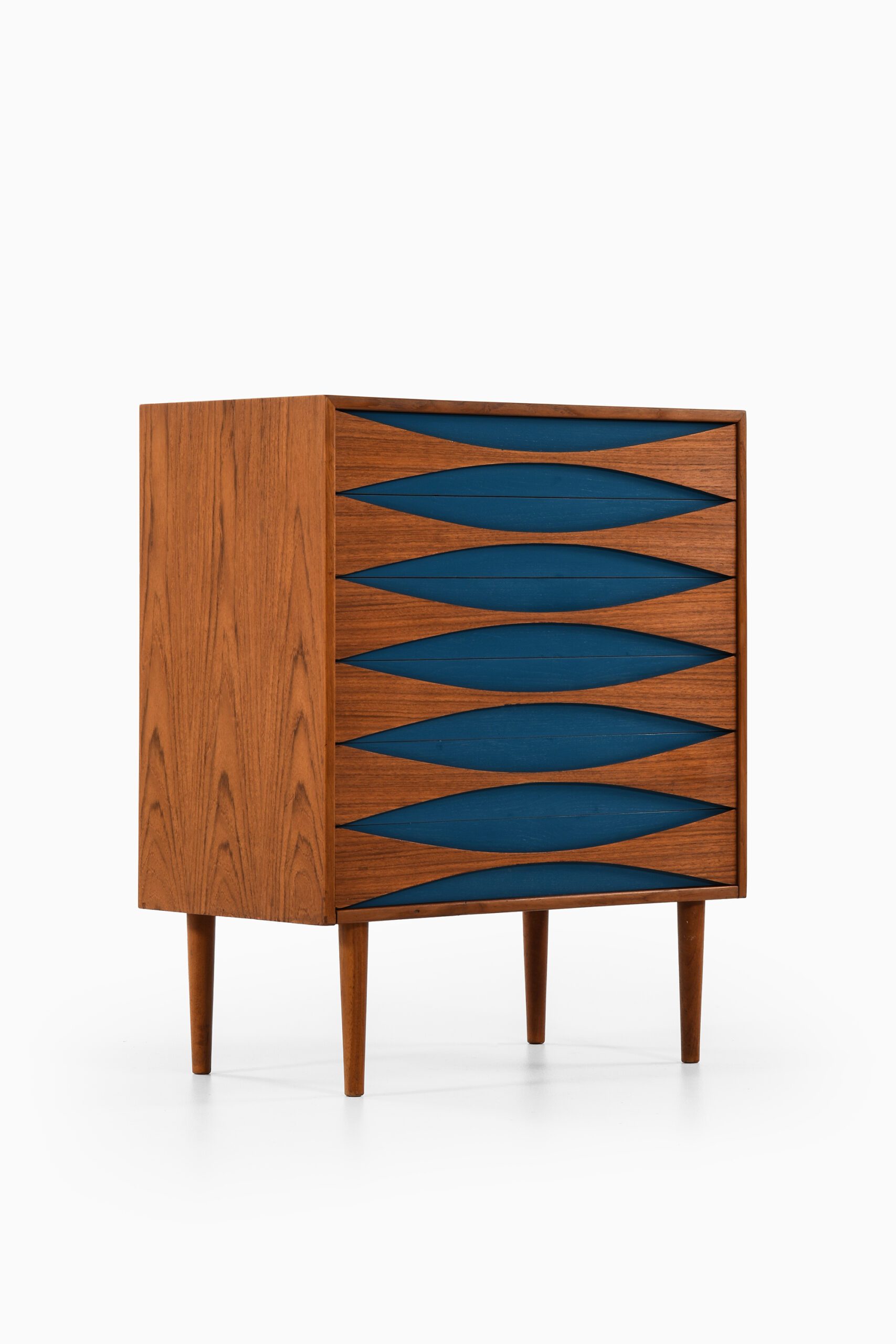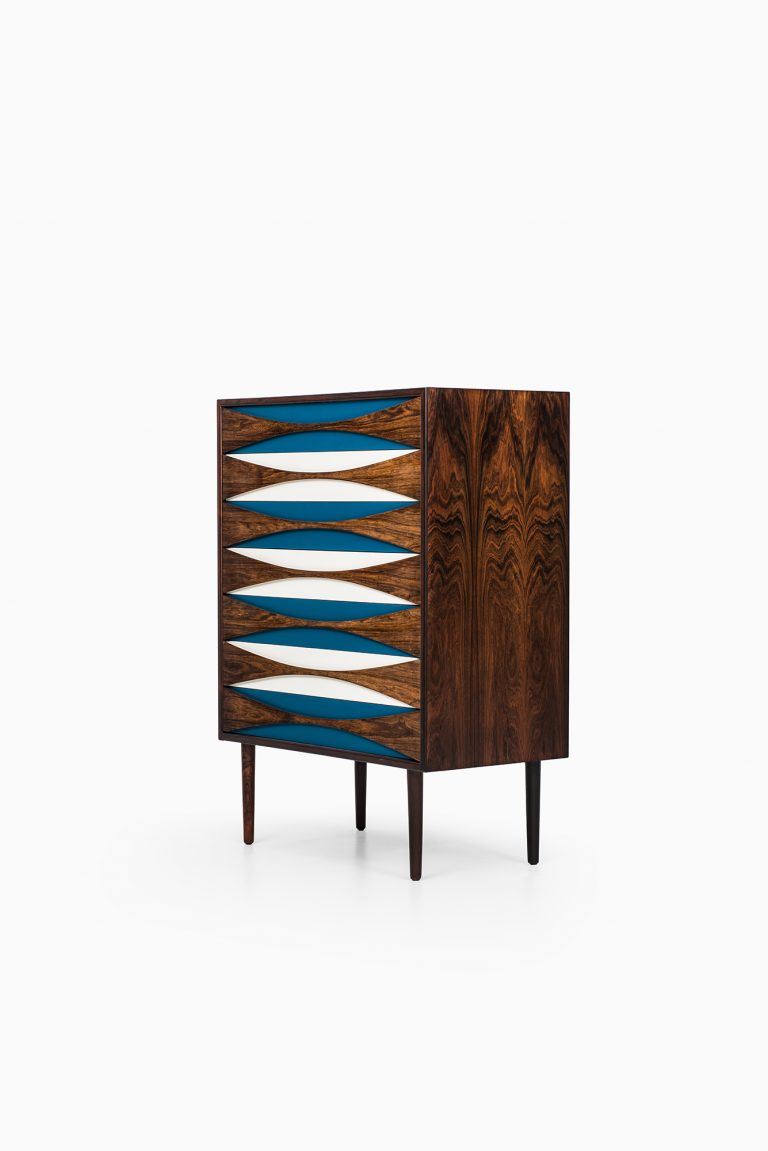Arne Vodder bureau
This rare bureau, designed by Arne Vodder and produced by Sibast Møbelfabrik in Denmark during the 1960s, exemplifies the refined craftsmanship and elegant simplicity of Scandinavian mid-century design. The piece is constructed from a harmonious combination of teak and oak, with the teak veneer on the front and top surfaces showcasing a fine, warm grain pattern. The oak used in the base and interior drawer construction provides a lighter contrast as well as structural durability.
The bureau features a compact yet highly functional form, incorporating three spacious drawers. Each drawer is equipped with recessed, elongated handles—an iconic design element in Vodder’s work—that maintain clean lines and a seamless appearance. The tabletop is framed with a subtly raised edge, adding both a decorative touch and a practical function as a containment barrier. The piece is supported by four slightly tapered legs, which lend stability while contributing to a light, elevated aesthetic.
Arne Vodder, a renowned Danish architect and furniture designer, is celebrated for his understated elegance and meticulous attention to detail. His collaborations with Sibast Møbelfabrik yielded designs that combine superior materials with precise joinery and craftsmanship. Sibast was one of the foremost Danish furniture manufacturers during the mid-century period, known for producing many iconic pieces that define Scandinavian modernism.
The bureau measures approximately 91.5 centimeters in width, 49.5 centimeters in depth, and 76 centimeters in height (36 x 19.5 x 29.9 inches), offering a well-proportioned and versatile piece suitable for various interior settings.
Dimensions (cm) | W: 91.5 / D: 49.5 / H: 76 |
| Producer | Sibast Møbelfabrik |
| Decade | 1960s |
| Country | Denmark |
| Style | Mid Century, Scandinavian Modern |
| Material | Oak, Teak |
| Designed in | 1960s |
| Item Number | 139650 |
Arne Vodder
Arne Vodder was trained by Finn Juhl, who became his friend and business partner. Before concentrating on furniture alone, in 1951 he opened his own studio with the architect Anton Borg. Together they designed some 1,100 low-cost houses which prov...
Read more







